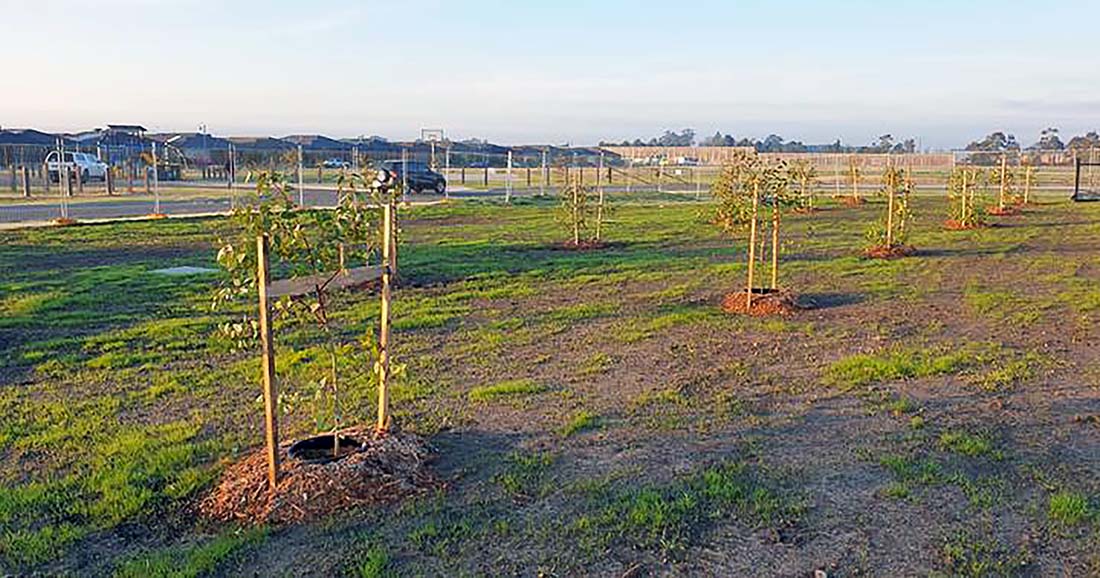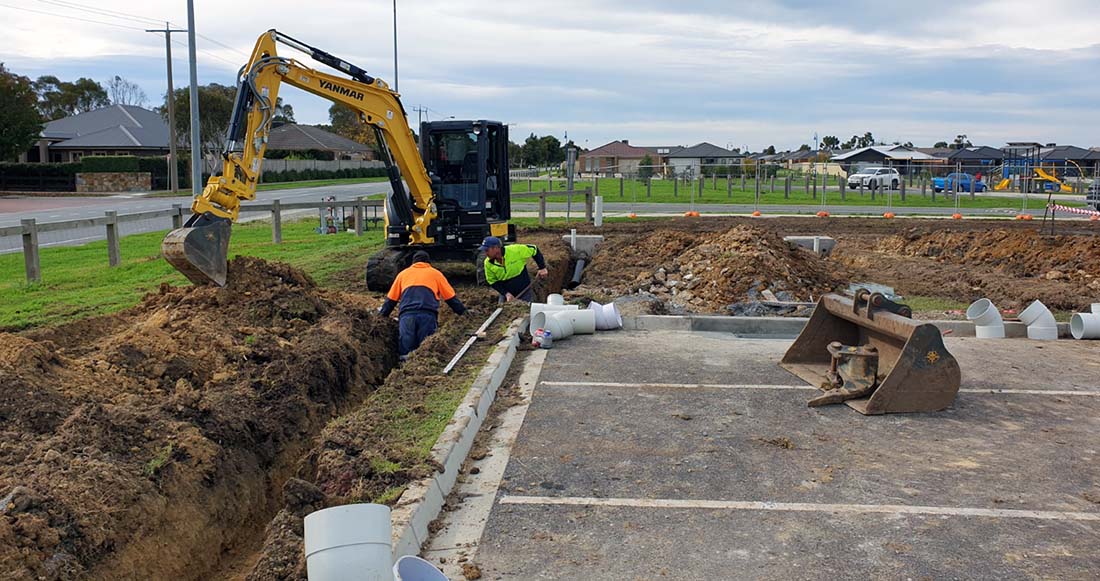Shading, cooling and greening Melbourne’s public spaces
Merging the need to provide more shade and greenery in our urban areas with the need to reduce volumes of stormwater running off hard surfaces and into waterways is a perfect marriage.
Councils, community groups and water corporations are actively working to make Melbourne cooler and greener in alignment with urban forest strategies such as Living Melbourne, 2019 and Plan Melbourne, 2017. Increasingly vegetation is being planted across Melbourne in parks and on median strips to help cool our city, create shade, improve amenity and create habitat.
The opportunity exists to align the goals from these strategies with the stormwater targets set in the Healthy Waterways Strategy.
Innovative councils such as Melton and Cardinia Shire are using Water Sensitive Urban Design (WSUD) to passively irrigate street trees with stormwater. This has multiple benefits including contributing to stormwater infiltration targets, improving canopy cover, enhancing urban cooling and reducing the impact of stormwater pollution on rivers and creeks.

Passive watering of street trees helps infiltrate stormwater
Traditional urban development dramatically changes the way water moves through the landscape and is one of the biggest threats to the health of our waterways. The Healthy Waterways Strategy sets out ambitious, but critical, targets for harvesting and infiltrating stormwater. These targets have been set in response to the Melbourne community’s strong support for stormwater harvesting and infiltration to halt further degradation to waterways.
In natural catchments, most of the time rainfall is intercepted by vegetation and is either taken up by the plants or it filters slowly into the ground (infiltration). This process is disrupted by urban development where roofs and roads replace vegetation and water is conveyed directly to streams via pipes. Too much water in the stream during rainfall events and not enough during dry times is the main problem we face in urban catchments. Habitats are eroded by flashy flows when it’s raining and critters are starved of water when it’s dry.
To better manage the impacts of urbanisation on waterways, we need to capture and reuse stormwater and allow as much as possible to infiltrate into the ground. Improved management of flows will also reduce pollutants such as nitrogen, phosphorus, sediments and litter.
The Healthy Waterways Strategy stormwater targets and recently released EPA urban stormwater management guidance indicate how much should be harvest and infiltrated in each catchment in order to protect the streams.
Passive watering of street trees and related projects that green and cool our urban environments using stormwater is one way that infiltration targets and waterway protection can also be achieved.
For more information on how new EPA urbans stormwater management guidance will improve the protection of streams see Improving urban water quality - panel discussion.
New designs to utilise stormwater for street trees
This year, local councils including Cardinia, Melton, Monash, Moreland, and Port Phillip together with Melbourne Water and researchers from University of Melbourne, have been refining the design of alternative streetscapes that specifically target reduction in stormwater runoff to support tree canopy development and enhance urban cooling. Intercepting stormwater runoff and helping it to soak into the ground is good for growing trees, and it helps to meet maintain streamflow and contribute to stormwater infiltration targets in the Healthy Waterways Strategy.
The research team is trialling six different streetscape designs, each focusing on different ways of capturing and storing large volumes of runoff, allowing stormwater to infiltrate into median strips in residential areas. This includes designs to provide passive irrigation for individual tree pits and larger diversions with constructed storage systems providing irrigation to rows of trees. The trials have been established in different locations across Melbourne to reflect different rainfall bands, soil types, and areas of existing and new development.

“Capturing and storing stormwater for irrigation of street trees is a fantastic way to support tree development, enhance urban cooling and protect our rivers and streams. The trialling of different streetscape designs will provide industry with some great information to move forward and implement new and innovative approaches to water sensitive urban design and more liveable communities”
Paul Hanley, The University of Melbourne
Moving forward
Results from this research, to be delivered over the next two years, will allow us to transition from pilot-scale projects to common practice, in both established and growth suburbs. The increased planting and growth of trees in streets that are watered by stormwater run-off will contribute significantly to both Healthy Waterways Strategy infiltration targets and to urban forestry targets set by local councils.
Links to the Healthy Waterways Strategy – Region-wide
The development of new designs for passive watering of street trees will inform the planning of larger scale urban forestry projects that will deliver multiple benefits by contributing to stormwater infiltration targets in the Healthy Waterways Strategy and supporting cooler, greener urban environments.
The collaboration between Local Government, Universities and Melbourne Water is a great example of creating opportunities to align across multiple strategies and co-deliver to improve the overall outcome.